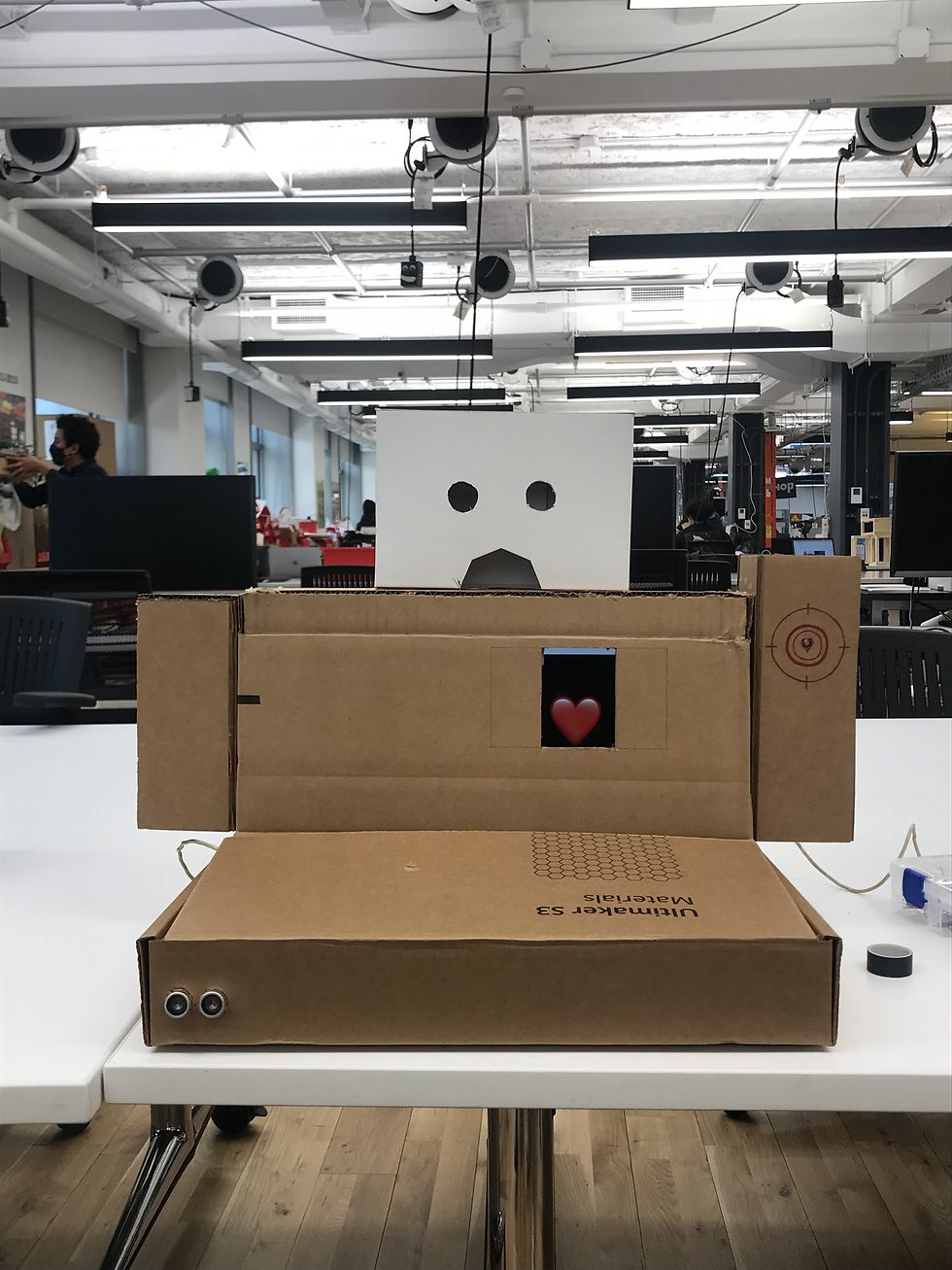Melting Distance (PCOMP Project 3)
- yz7720
- Dec 2, 2021
- 2 min read
Updated: Dec 8, 2021
In the context of the pandemic, because of the need for social distancing, many places implemented a transparent divider between people. Although our sense of sight and hearing is not affected, the most important physical connection and interaction between people is separated. In this project, Olivia and I try to convey that though we are seperated, but the desire for us to social and make connection is unquenchable.

At the beginning, the idea is to have something in between two people, which they can use to interact but not actually touching. And we all agreed that the material should be something transparent and light, so they can see each other clearly.


The fabrication part of this project took us most of the time since we spent most of the time on material testing when we decided to bring ferrofluid into the play. Ferrofluid is such a intriging material but at the same time really hard to control . After research and experiments, we found that the container has to be borosilicate glass, and the intermediary liquid has to be distilled water, so it can stay the liquidity state instead of attaching to the container and leave a mark.


After the right container (Testing Tube) is found, we started to build 3D model in Rhino for shape ideation. The iceberg shape then crossed our minds at this stage since we want more variation for the final shape instead of just a box. The meaning behind this is that "we" are two seperate cold blue icebergs (blue LED), not until when "we" connected the ferrofluid between us (form a ferrofluid line to represent connection), "we" started to melt.(Orange LED).



We also considered engraving on the iceberg to emphase the melting state when the orange LED lights up. But we agreed that we want to maintain a clean and simle look so we didn't do it on the final version.


For computation part, we used six ultrasonic sensors to detect the hands position under different conditions and LED stripes will light up in different sequences and colors corresponding how the audience interacts with it.

We used the FastLED.h library to write the LED code, and wrote the ultrasonic sensor variable values after we build the final model. The full code link is here.





Comments